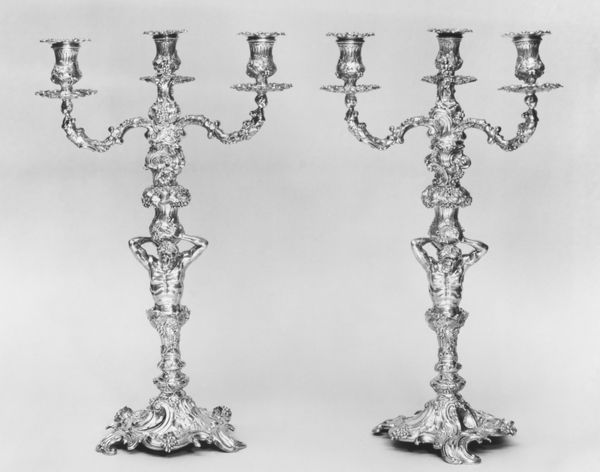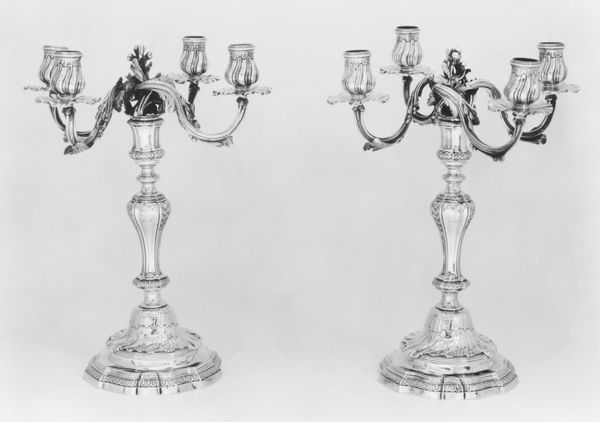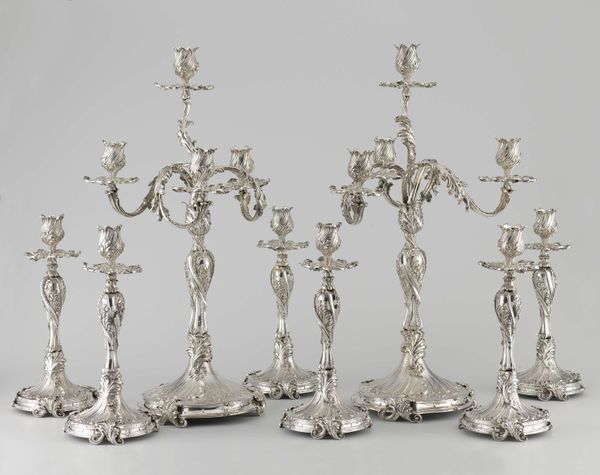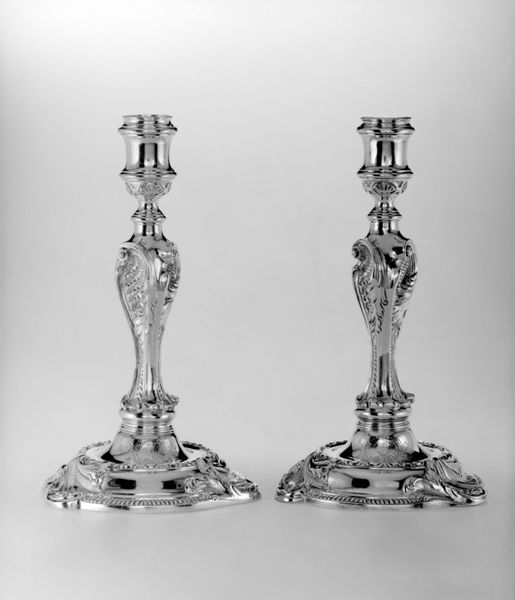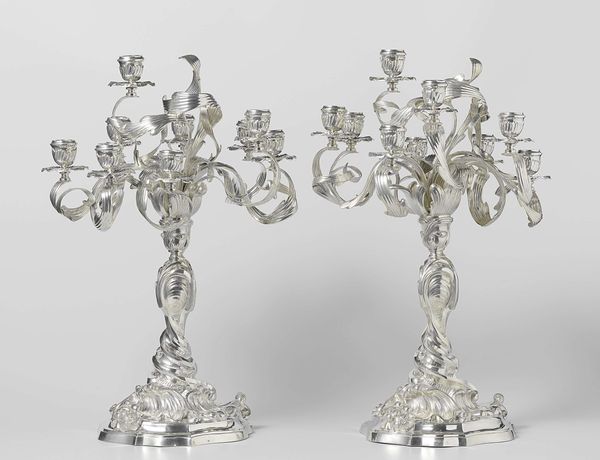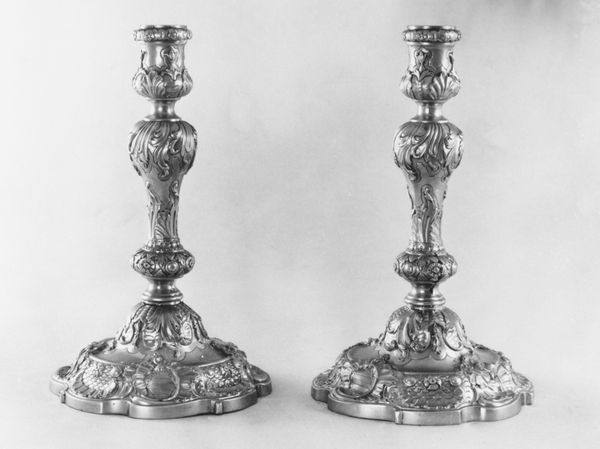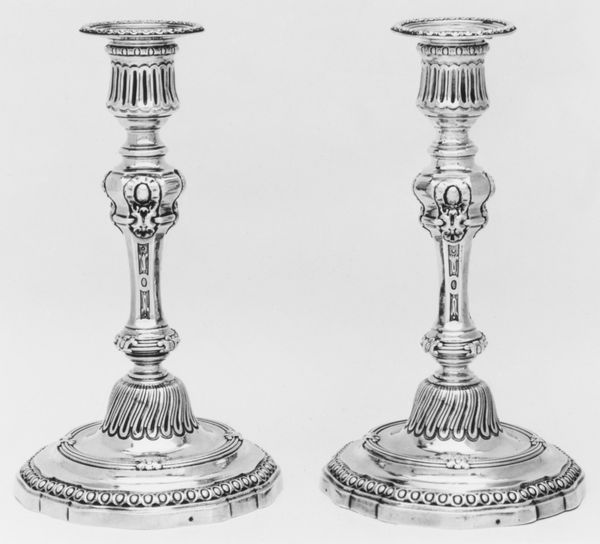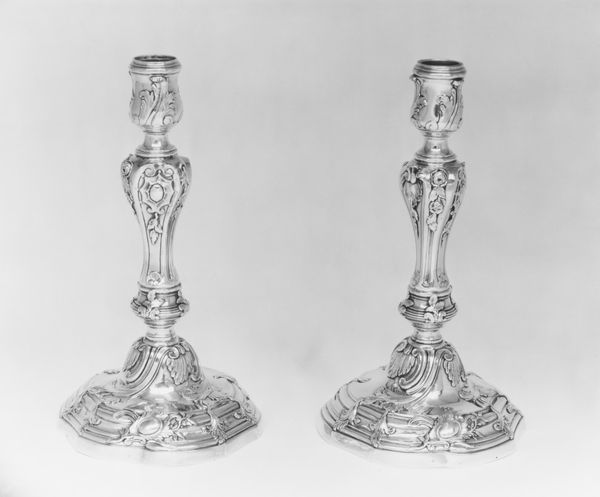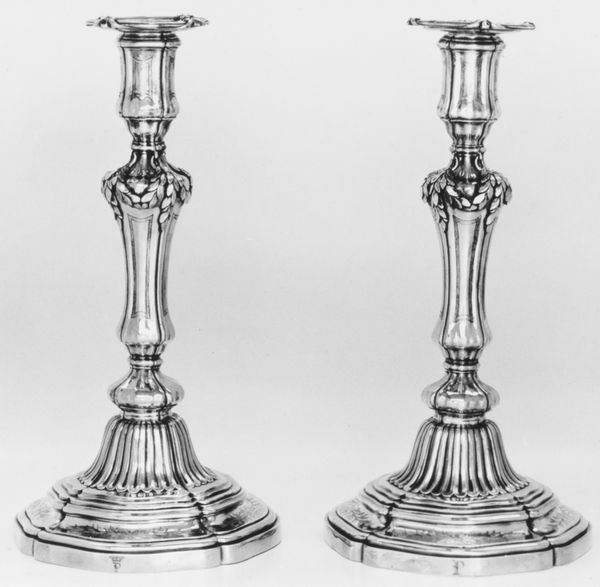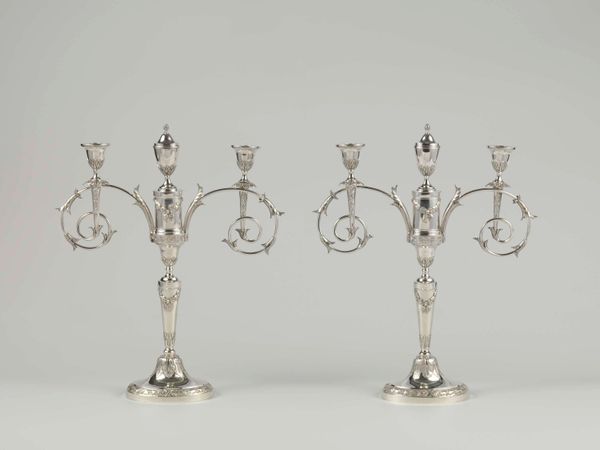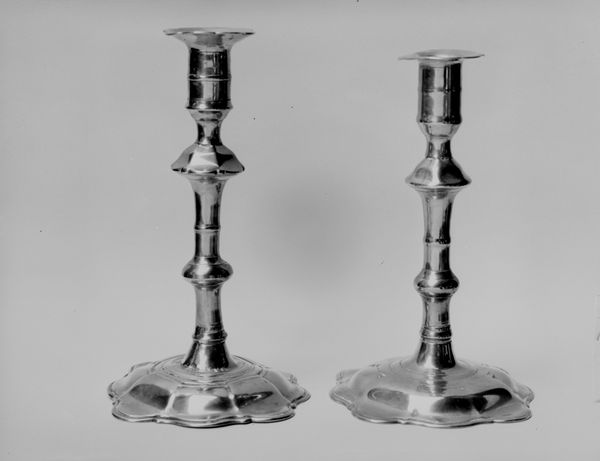
silver, metal, guilding, sculpture
#
silver
#
baroque
#
metal
#
sculpture
#
guilding
#
sculpture
#
decorative-art
Dimensions: Height (candlesticks only, each): 9 7/8 in. (25.1 cm); Height (with arms, each): 15 3/4 in. (40 cm)
Copyright: Public Domain
Curator: What a pair! Standing before us are a pair of silver candlesticks, crafted between 1749 and 1750 by the skilled hands of Paul de Lamerie. Editor: They’re positively exuberant. All those flourishes, it feels like controlled chaos, but beautiful controlled chaos. There's such a sense of abundance to them. Curator: That exuberance is classic Baroque, wouldn't you agree? The sheer quantity of labor required to produce these pieces speaks volumes. Each curve, each leaf meticulously formed from silver. We should not forget that metalworking at this scale demanded not only artistry but a complex social organization of labor. Editor: True. But the way light catches the silver, dances across those leaves and scrolls... it evokes the warmth of candlelight, intimate gatherings, perhaps clandestine meetings under the soft glow. They speak of secret languages that the shadows may know. Curator: These weren't just utilitarian objects, they were statements of wealth and status. Consider the social context. The silver comes from mines, the labor from skilled artisans within a highly structured guild system... consumption elevated to an art form. The Baroque aesthetic actively promoted such conspicuous displays. Editor: I love thinking about the hands that touched them, not just Lamerie’s, but the miners, the smelters, the polishers... There’s a silent symphony of human endeavor embedded in these things. I can feel the dreams, ambitions, stories… of hands shaping cold material into warm beauty. Curator: Precisely. And thinking of silver as a raw material shifts our perspective. What kind of power dynamics were at play? Were there any ethical considerations within these complex commercial systems? How did this mode of creation support, and yet possibly exclude, other artisans from the wider commercial opportunity? Editor: That makes me ponder, if these candlesticks could speak, what tales of celebration and secrets would they tell? Perhaps tales of late-night philosophizing, scandalous romances, and heated political debates bathed in the soft, forgiving glow of candlelight... Curator: And to reiterate our conversation; as we conclude, these candlesticks are far more than mere decorations. They illuminate complex networks of labor, consumption, and aesthetic ambition during a fascinating period in European history. Editor: They serve as gleaming testaments to human creativity. Beautiful artifacts, these candlesticks remind us of stories of shadow and illumination – an invitation to see beauty and history revealed in unexpected ways.
Comments
No comments
Be the first to comment and join the conversation on the ultimate creative platform.
